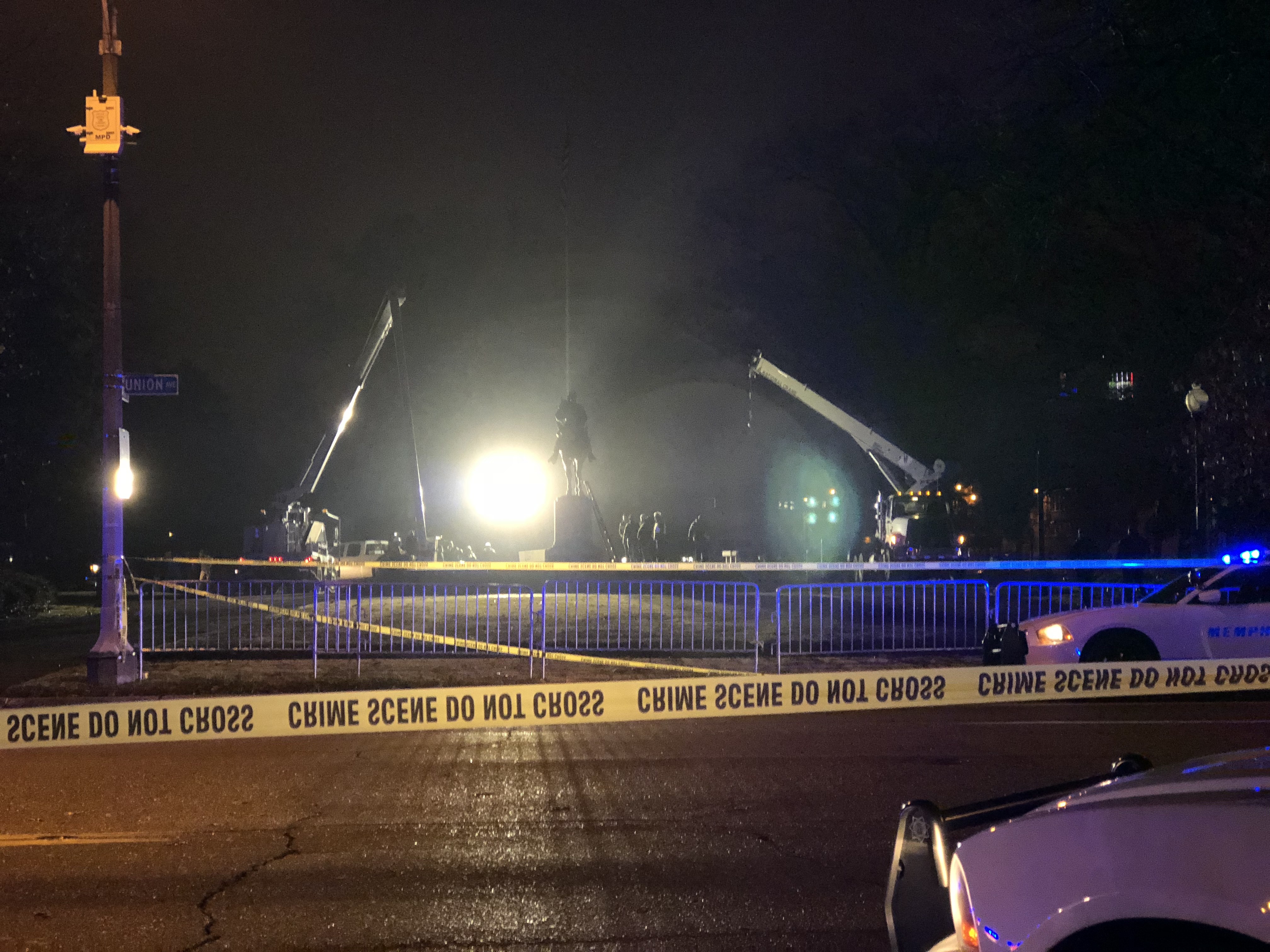
Minutes before Nathan Bedford Forrest’s statue was removed from Health Sciences Park
So they are gone now — finally — the misguided memorials to Nathan Bedford Forrest, soldier, KKK leader, and slave trader, and Jefferson Davis, president of the Confederacy. Their images have been removed, not by outside edict — in fact, contrary to outside edict — but by the clear and obvious will of the local populace.
The strategy of selling the parks to a nonprofit group, which, in turn, would remove the offending statues had been under consideration for months, though the city’s leaders had meanwhile gone through the hoops prescribed by the state, dutifully and patiently. It had become evident, though, that, in this case as in many, many others, the concepts of local option and home rule itself were going to be smothered in bureaucracy and thwarted by the domineering machinery of state government.
Given next year’s oncoming 50th anniversary commemoration of Martin Luther King’s mortal sacrifice here, it was not to be tolerated that Nathan Bedford Forrest and Jefferson Davis should be allowed to continue in their perches of honor and their symbolic oversight of the city and its physical horizons. Not only city and county government and a spirited group of activists led by the likes of Tami Sawyer and Earle Fisher, but a broad consensus of the population at large had made clear their determination to do an about-face on the discredited past and to head into the duration of the 21st century and beyond with what Abraham Lincoln termed a “new birth of freedom.”
Or, as Mayor Jim Strickland put it in announcing last week’s action: “The statues no longer represent who we are as a modern, diverse city with momentum. As I told the Tennessee Historical Commission in October, our community wants to reserve places of reverence for those we honor. … Though some of our city’s past is painful, we are all in charge of our city’s future. Black and white, young and old — every single one of us. That’s the symbolism for which I want this day to be remembered.”
It remains to be seen what future statuaries or memorials, if any, will take the place of these repudiated ones, but there is a measure of honor to be shared in the present — by the mayor and public officials and citizen activists. And even, to a certain extent, by those elsewhere, such as outgoing Governor Bill Haslam and various candidates for office, who at least lent their rhetorical support to the cause of human justice and to the power of people at ground level to control their destiny and shape their community’s public spaces.
There should be no recriminations against those who resisted this overdue change and profess themselves saddened by it. As Strickland said, “we are all in charge of our city’s future,” and the march forward should exclude none. In removing the images of reactionary sectarianism, we have at last opened the way for all of us to progress together. As Dr. King said in his “I Have a Dream” speech in 1963, delivered at the foot of the Lincoln Memorial, “Free at last, free at last! Thank God Almighty, we are free at last!”